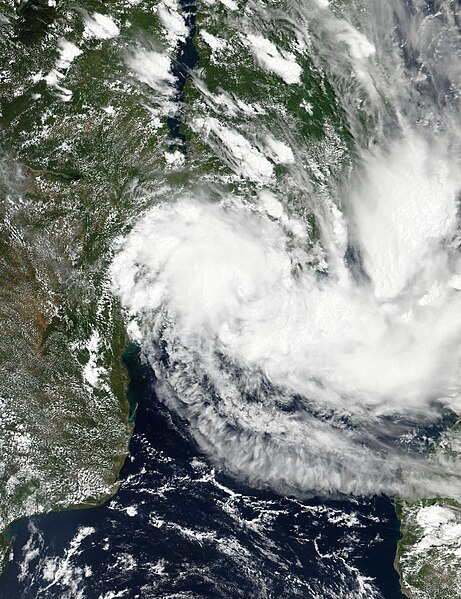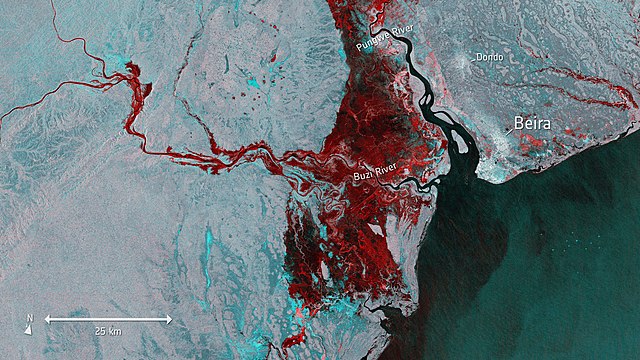On 29 April 1892, a powerful tropical cyclone struck the island of Mauritius in the southwest Indian Ocean. At least 1,200 people died during the storm, and another 4,000 were injured, with 50,000 people left homeless, making the cyclone the third-deadliest tropical cyclone recorded in the South-West Indian Ocean basin, behind Cyclone Freddy in 2023 and Cyclone Idai in 2019. It is also the fourth-deadliest recorded in the Southern Hemisphere, behind the aforementioned Cyclones Freddy and Idai, and the 1973 Flores cyclone. The storm originated north of the island, and local meteorologists expected that the storm would remain away from the island. Consequentially, residents were unprepared until the arrival of the strong winds. For a span of 65 minutes, the calm of the storm's eye occurred on the island, before the winds again increased, reaching 195 km/h (121 mph), with gusts to 216 km/h (134 mph). During the storm, the barometric pressure dropped to 947 mbar (27.96 inHg), breaking the 74-year-old record for the lowest recorded pressure on the island.

Damage in Port Louis from the storm
Storm damage in Port Louis
Intense Tropical Cyclone Idai was one of the worst tropical cyclones on record to affect Africa and the Southern Hemisphere. The long-lived storm caused catastrophic damage, and a humanitarian crisis in Mozambique, Zimbabwe, and Malawi, leaving more than 1,500 people dead and many more missing. Idai is the deadliest tropical cyclone recorded in the South-West Indian Ocean basin. In the Southern Hemisphere, which includes the Australian, South Pacific, and South Atlantic basins, Idai ranks as the second-deadliest tropical cyclone on record. The only system with a higher death toll is the 1973 Flores cyclone that killed 1,650 off the coast of Indonesia.
Intense Tropical Cyclone Idai approaching Mozambique shortly after its peak intensity on 14 March
Tropical Depression 11 moving ashore in Mozambique on 4 March
False-color satellite imagery of flooding (depicted in red) on 19 March in the region where Idai made its second landfall
Housing in Beira destroyed by the cyclone.






